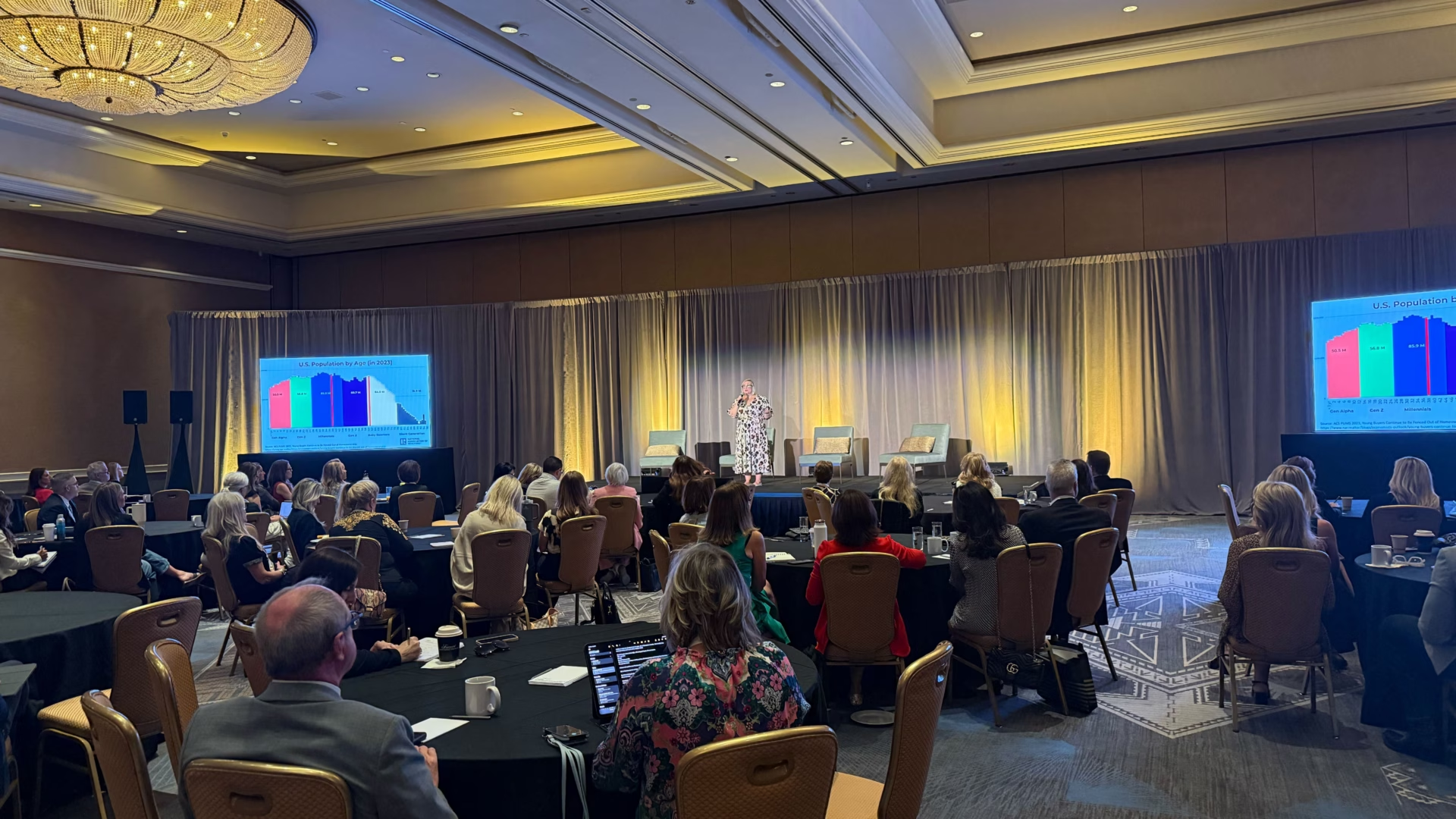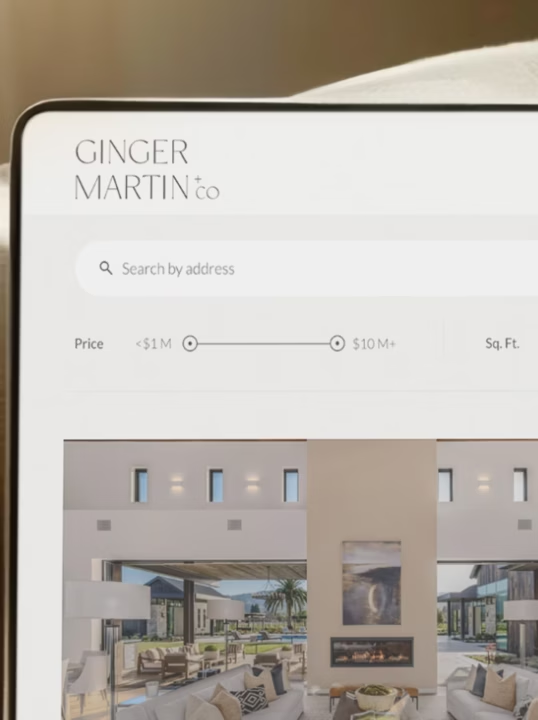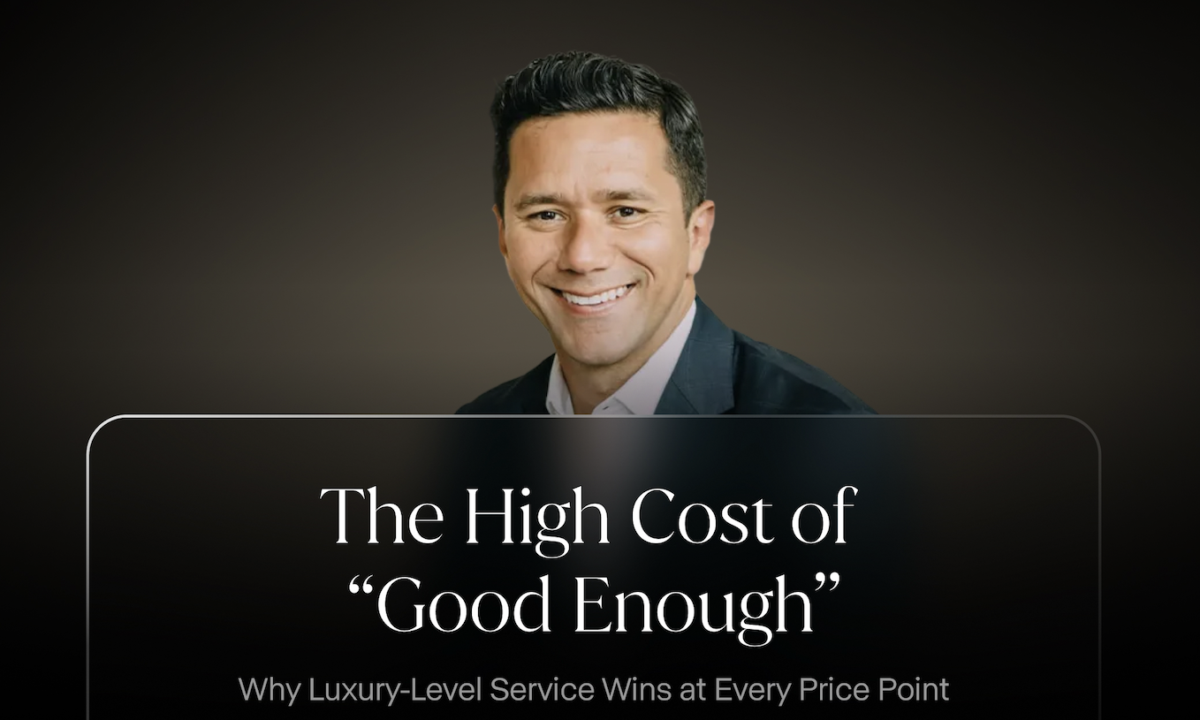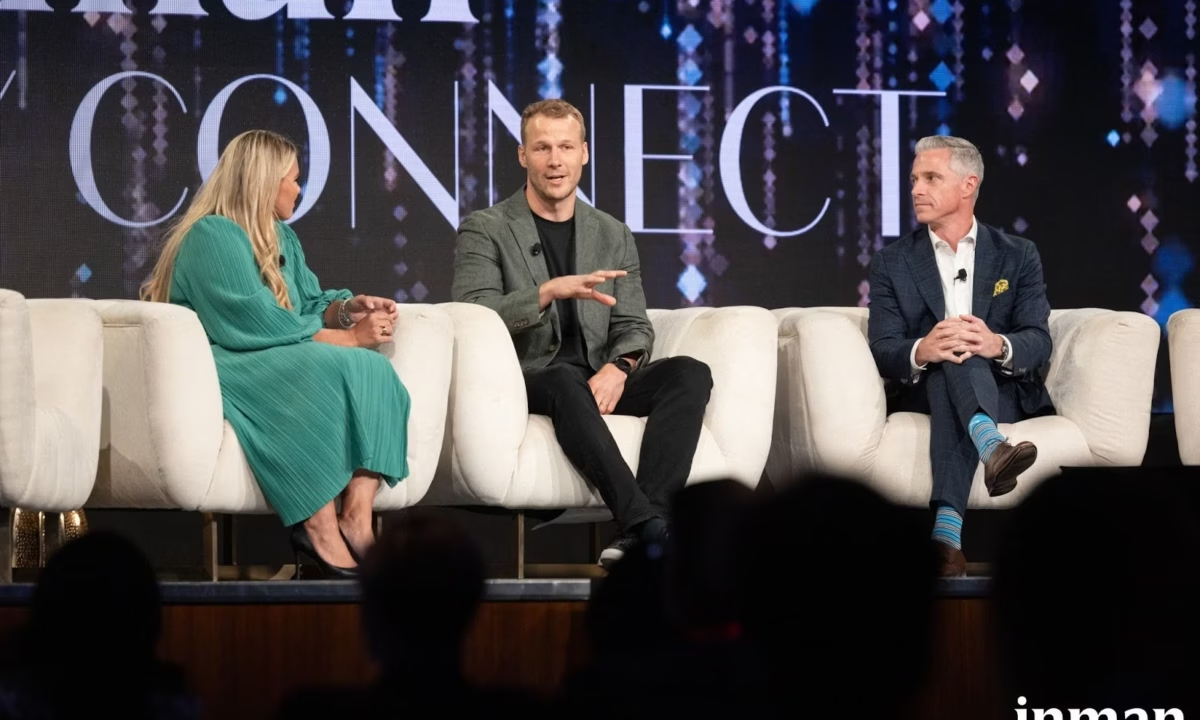
With insights from Luxury Presence Director of Content Chris Linsell

At the Leaders in Luxury Conference in Arizona, Jessica Lautz, Deputy Chief Economist and Vice President of Research at the National Association of Realtors, offered a data-rich look at where the U.S. housing market stands and where it’s heading.
Her insights delivered both reassurance and a clear-eyed challenge: Agents must help clients navigate a market defined by low supply, locked-in rates, and widening wealth divides.

To help unpack what these trends mean for working agents and brokerages, Luxury Presence Director of Content Chris Linsell, a real estate strategist and educator, shared his perspective on where Lautz’s data meets day-to-day strategy.
Home sales are stuck at 1995 levels, and inventory is to blame
Lautz began with a sobering statistic: Current home sales volumes resemble those from thirty years ago, despite a U.S. population that has grown by more than 75 million since then. The culprit is clear.
“If we look at sales volume over the last two and a half years, it’s really been stuck … the number of units that are actually being sold most closely matches [data from] 1995,” Lautz said. “That’s a long time ago.”
“This data shows just how frozen parts of this market have become,” said Linsell. “Real estate agents can’t wait for conditions to change. They need to help their clients make confident decisions inside today’s constraints, because the demand is still there, even if the inventory isn’t.”
Builders are slowly increasing activity, but the market’s recovery is uneven. Some communities are returning to pre-pandemic inventory levels, while others remain starved for listings. Lautz noted that if interest rates fall significantly in 2026, “inventory is going to be snapped up, and we’re going to come right back to those bidding wars [of 2021-2022].”
“As Jessica points out, when change comes, it will be fast and competitive,” Linsell said. “Agents and brokers who are preparing clients now, who are helping them understand how quickly dynamics can shift, will be the ones getting calls when things heat up again.”
The rise of the accidental landlord
She also highlighted the persistence of what she calls the “accidental landlord,” homeowners who hold onto low-rate mortgages rather than sell.
“I know [this issue is prevalent] based on a text that I got from my sister this morning,” she joked. “She’s now an accidental landlord. She’s saying, ‘I’m gonna hold on to my condo in the Disney area. I’m at 3%. Why would I sell that?’”
“Jessica has identified one of those quietly powerful market shifts,” Linsell said. “These aren’t people investing in rentals; they’re holding onto good debt. That means fewer listings and longer hold times. Agents need to factor this into their pipeline planning, whether that’s adjusting listing expectations, targeting different seller profiles, or doubling down on referral relationships.”
Homeowners are the clear winners
Despite affordability struggles, homeowners have seen staggering gains in wealth. Luxury properties have been the biggest beneficiaries. Homes priced at $1 million or more have doubled as a share of the market in the last decade. Lautz attributes that growth to both price inflation and wealth transfer.
“There’s a lot of generational wealth in this housing market,” she said. “You can see that the [luxury] market is performing much better than what we see at the $100,000 to $500,000 price.”
“This data confirms what we’ve been hearing anecdotally,” said Linsell. “Buyers with access to generational wealth are changing the makeup of the luxury market. Be ready to meet that buyer with a strategy that considers budget, but also long-term goals and lifestyle planning.”
Cash is king and getting stronger
One of Lautz’s most striking points was the rise in cash transactions. For buyers in their 70s, half pay cash; among those in their 60s, it’s 40%. Even first-time buyers are entering the market with cash, a phenomenon driven by savings, stock market gains, and inheritances.
“One in 10 first-time home buyers are paying cash,” Lautz noted, adding that “7% of working home buyers [are] using inheritances for their down payments or to pay [all] cash.”
“As Jessica points out, cash is no longer just for downsizers or investors; it’s reshaping how deals are done across the board,” Linsell said. “When financing isn’t the barrier, the agent’s value shows up in speed, clarity, and precision.”
Mortgage rates: Stability, not relief
For agents counseling buyers waiting on lower rates, Lautz offered realism.
“We expect [rates] to stay in that 6% range,” she said. “So as you’re working with buyers who say, ‘I’m just going to stay on the sidelines while it comes down to two or three or 4%,’ you’re going to be waiting for a long time.”
“This is a crucial message,” said Linsell. “Markets don’t rewind. Help buyers focus on what’s possible now, not on a rate that may never come back.”
Migration reshapes markets and opportunities
The migration boom continues, especially toward the Mountain West, Texas, and Florida.
“It’s not a surprise to see you in this room,” Lautz said, pointing out that many attendees for this luxury-market-focused event came from these high-growth states.
Suburbs and small towns remain popular, but city living is rebounding, especially among retirees seeking walkability and amenities. Young adults, meanwhile, split between urban and rural life depending on family needs.
“These shifts are full of opportunity for agents who understand the motivations behind the move,” Linsell said. “Whether it’s lifestyle, taxes, or family proximity, being the agent who can clearly speak to those priorities has a serious advantage.
That means showcasing not just listings, but what it’s like to live there: Highlighting local schools, community dynamics, remote work appeal, or tax benefits in your marketing. Buyers aren’t just relocating; they’re reimagining how and where they want to live. Agents who connect those dots are the ones getting hired.”
The rise of single women and the changing face of the buyer
Single women now make up a record share of homebuyers, outpacing single men across generations.
“Back in 1985, 75% of home buyers were married,” Lautz said. “Today, just half.”
This shift is accompanied by more unmarried couples, multi-generational households, and a noticeable decline in buyers with children. As birth rates fall, Lautz noted, “It’s going to shift the importance of school districts.”
“This data reflects a broader range of buyer profiles,” Linsell said. “Agents should be listening for cues beyond family size: Think independence, work flexibility, and neighborhood feel, and be ready to tailor your guidance accordingly. These buyers are looking for a property and a lifestyle that supports their specific situations.”
Generational shifts: Boomers dominate, millennials delayed
The median first-time buyer age is now 38, up from 28 in the 1980s. Lautz called this a major loss of wealth potential.
Meanwhile, baby boomers have become the largest share of buyers. The median repeat buyer today is 61, up from 36, forty years ago.
“This really highlights the divide in housing opportunity,” Linsell said. “Younger buyers often feel behind. Agents who understand that emotional weight and still know how to guide them forward build real trust. The key is to meet them where they are and offer a clear, realistic plan to move ahead.”
Agents remain essential
Despite changing demographics, Lautz emphasized that consumers continue to rely on agents.
“Eighty percent of buyers are using agents in their recent transactions,” she said. “They want someone to find that right home… and sellers need someone to price their [home] and find that qualified buyer.”
“This isn’t about access anymore,” Linsell said. “Buyers already have the listings. What they need is someone who can decode the noise, cut through the contradictions, and give them real clarity. Agents who can translate uncertainty into confident action, that’s who clients are sticking with.”
The trends Jessica Lautz outlined paint a market shaped by limited inventory, generational wealth shifts, and evolving buyer profiles. But behind every data point is a clear opportunity for agents willing to adapt, inform, and lead.
With Luxury Presence, real estate agents have the tools, insights, and digital presence to communicate their value and guide clients through any market, no matter how challenging.
Get the platform that drives results.
Agents using Luxury Presence grew sales nearly 2x faster than their peers, increased sold listings by 6%, and closed over $300B in transactions. Ready to grow your business? Let us show you how.




